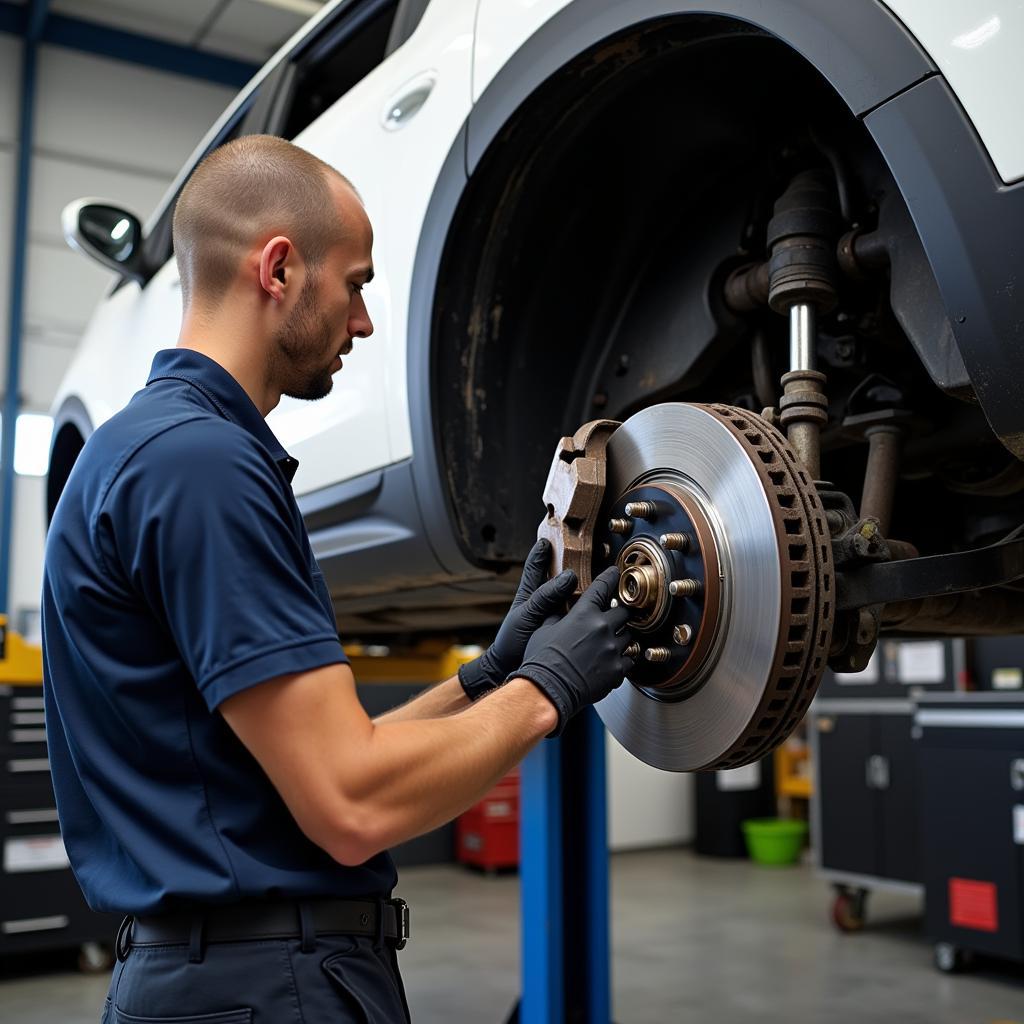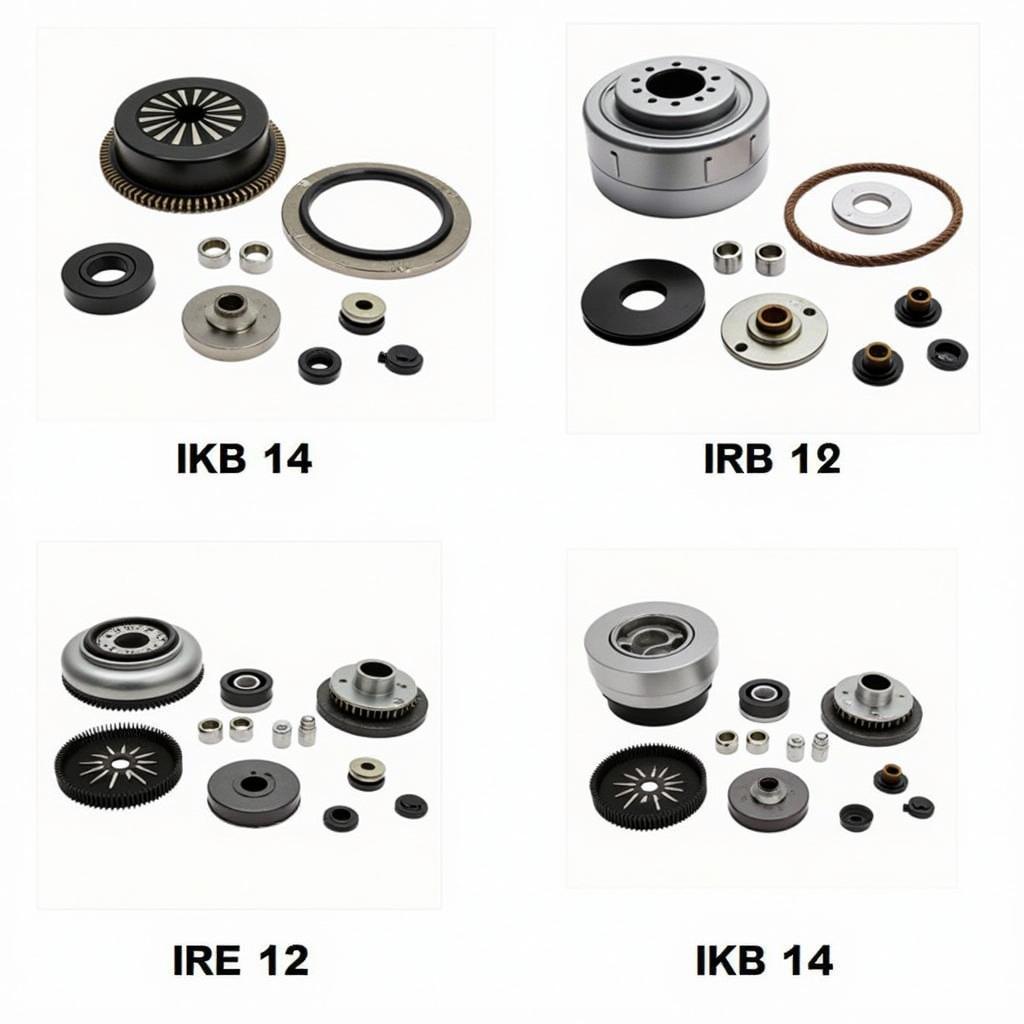Imagine cruising down the road, only to glance at your dashboard and see a glaring red light illuminating— the dreaded “no brake warning light”. This heart-stopping signal signifies a critical issue with your vehicle’s braking system, demanding immediate attention.
This comprehensive guide delves into the intricacies of the no brake warning light, exploring its potential causes, diagnostic procedures, and effective solutions. Whether you’re a seasoned mechanic or a car owner seeking knowledge, this article equips you with the insights needed to address this crucial safety concern.
Understanding the No Brake Warning Light
The no brake warning light, often depicted as a circle with an exclamation point (!) or the word “BRAKE” inscribed, serves as your vehicle’s primary communication channel for brake system malfunctions. When illuminated, it signals a problem that could compromise your ability to decelerate or come to a complete stop safely.
Common Causes of a No Brake Warning Light
Understanding the potential culprits behind a glowing no brake warning light is crucial for efficient diagnosis and repair. Here are some of the most common causes:
1. Low Brake Fluid Level
Brake fluid, the lifeblood of your vehicle’s hydraulic braking system, transmits force from the brake pedal to the wheels, enabling deceleration. A low brake fluid level often indicates a leak within the system, hindering its ability to generate the necessary hydraulic pressure.
2. Worn Brake Pads
Brake pads, responsible for clamping down on the brake rotors to slow down or stop the vehicle, undergo wear and tear over time. When they reach a critically thin point, the brake pad wear sensor triggers the no brake warning light, urging you to replace them promptly.
3. Faulty Brake Light Switch
The brake light switch plays a dual role in your vehicle. It activates the brake lights when you press the pedal and also plays a crucial part in signaling the braking system’s status to the vehicle’s computer. A malfunctioning switch can disrupt these functions, leading to an illuminated no brake warning light.
4. ABS System Malfunction
The Anti-lock Braking System (ABS) enhances vehicle control during hard braking by preventing wheel lockup. A malfunction within the ABS module or its sensors can trigger the no brake warning light, often accompanied by the ABS warning light.
5. Master Cylinder Failure
The master cylinder acts as the heart of the braking system, converting the force applied to the brake pedal into hydraulic pressure. A failing master cylinder can result in a loss of braking power and an illuminated no brake warning light. For more information on master cylinder issues related to brake warning lights, refer to our article on master cylinder failure no brake warning light.
Diagnosing the Issue
Identifying the specific cause behind your no brake warning light requires a systematic approach:
1. Check Brake Fluid Level
Begin by inspecting the brake fluid reservoir. If the fluid level is significantly below the “MIN” mark, it indicates a leak that needs immediate attention.
2. Inspect Brake Pads and Rotors
Next, visually examine the brake pads and rotors for signs of excessive wear. Thin brake pads or scored rotors require replacement.
3. Scan for Diagnostic Trouble Codes (DTCs)
Employing an OBD-II scanner can reveal valuable diagnostic trouble codes stored in your vehicle’s computer, providing insights into the specific areas of concern within the braking system.
4. Consult a Qualified Mechanic
If the issue persists or you lack the expertise for further diagnosis, seeking assistance from a qualified mechanic is crucial. They possess the knowledge, tools, and experience to pinpoint and rectify the underlying problem effectively.
Addressing the No Brake Warning Light
The solution to your illuminated no brake warning light directly correlates to the diagnosed cause:
- Low Brake Fluid: Replenish the brake fluid to the appropriate level and consult a mechanic to identify and repair the leak.
- Worn Brake Pads: Replace the worn brake pads and consider replacing the rotors if necessary. Learn more about brake pad warning light issues on our dedicated pages for popular models such as the Mini Cooper and the Peugeot 307.
- Faulty Brake Light Switch: Replace the malfunctioning brake light switch with a new one.
- ABS System Malfunction: Diagnose and repair or replace faulty components within the ABS system, such as the module or sensors.
- Master Cylinder Failure: Replace the faulty master cylinder with a new one.
 Mechanic inspecting a car's brake system on a lift
Mechanic inspecting a car's brake system on a lift
Preventing Future Issues
Proactive maintenance is key to preventing future no brake warning light occurrences:
- Regular Brake Fluid Checks: Inspect brake fluid levels at least once a month and top off as needed.
- Timely Brake Pad Replacement: Adhere to the manufacturer’s recommended brake pad replacement intervals.
- Thorough Inspections: Include a comprehensive brake system inspection during routine vehicle maintenance.
Conclusion
A glowing no brake warning light signals a critical safety concern that necessitates immediate attention. By understanding its causes, utilizing proper diagnostic techniques, and implementing effective solutions, you can restore your vehicle’s braking system to its optimal working condition, ensuring your safety and that of others on the road. Remember, when it comes to brakes, a proactive approach is always the safest course of action. For car-specific brake warning light issues, explore our comprehensive guides on the Nissan Murano and the Mini.


